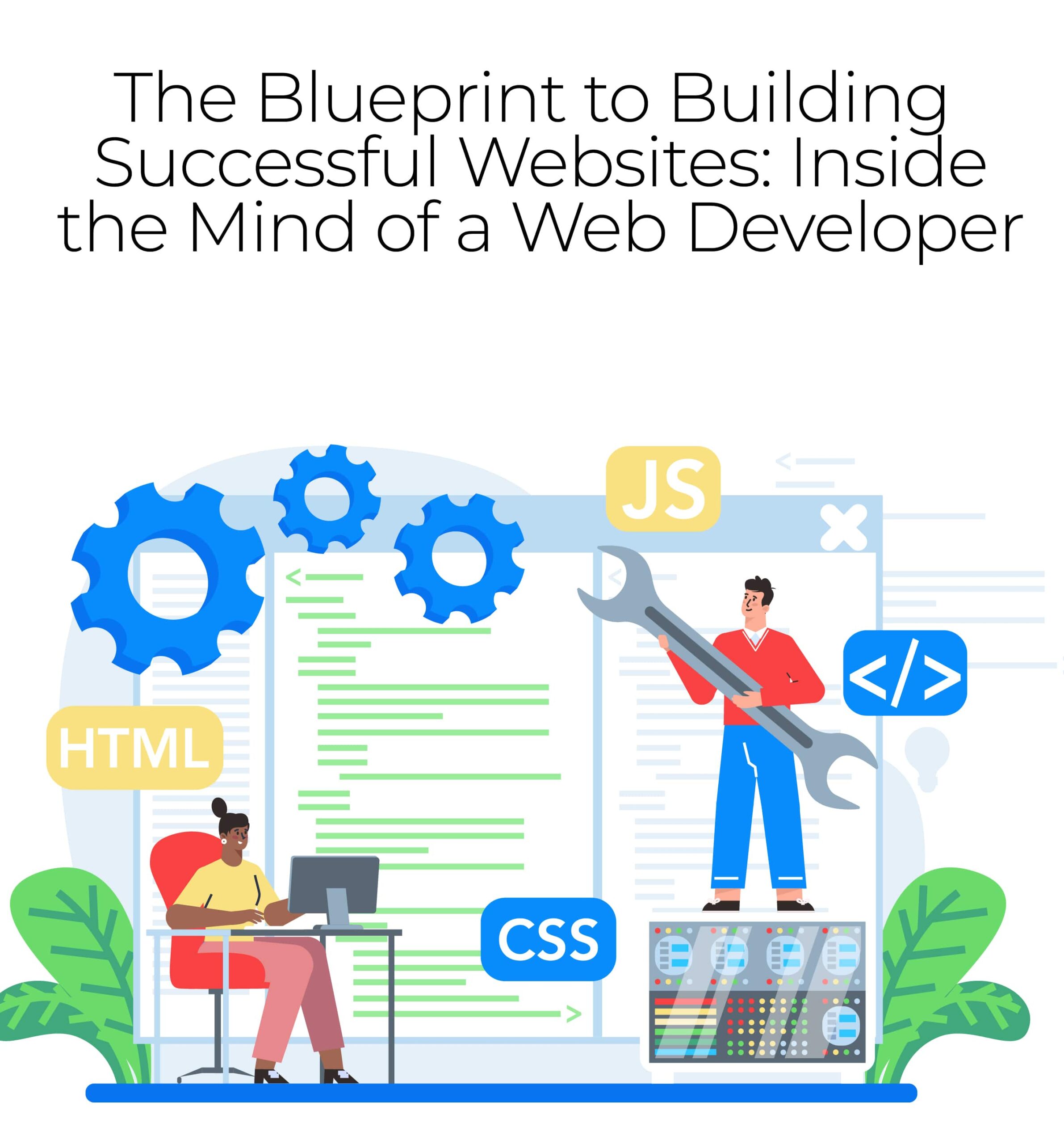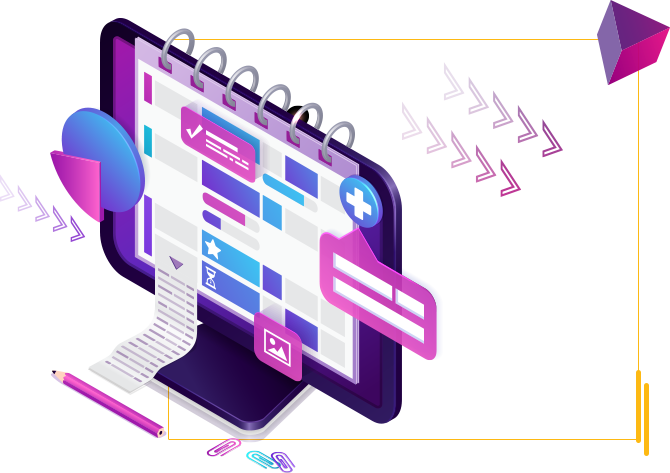
How Do Web Developers Create Websites
In today’s digital age, websites have become essential for businesses and individuals. From e-commerce platforms to informational blogs, web developers play a crucial role in bringing these online spaces to life. But have you ever wondered how web developers create websites?
In this article, we will delve into the intricate process of website development and explore the various steps and techniques web developers employ to transform ideas into fully functional sites.
Whether you’re a curious beginner or an aspiring developer looking to enhance your skills, join us as we uncover the secrets behind the process of creating captivating websites.


What Is Web Development?
As we journey through the age of the digital revolution, it is nearly impossible to overlook the paramount significance of website development.
So, what is web development? Web development refers to the work involved in building, creating, and maintaining websites. It involves aspects such as web design, web programming, web publishing, and database management. The term generally refers to the non-design aspects of website creation, mainly focusing on coding and writing markup.
Moreover, it ranges from developing simple text pages to complex web applications, social network applications, and business applications.
Website development is not merely about creating an online presence. It is an art, a craft that enables businesses to interact, connect and engage with their customers. As a part of web development, a website can serve multiple purposes. It can act as an information hub, a platform for social connectivity, a shopping portal, a blog, and more.
What makes web development unique is its versatility and adaptability. It accommodates various programming languages such as HTML, CSS, JavaScript, Python, Ruby, PHP, etc. The choice of language depends on the developer’s proficiency and the requirements of the website being developed.
In essence, website development is the digital world’s building block. The process behind the scenes brings to life the internet as we know it. Without it, the world wide web would be a barren digital landscape.
Who Are We?
We cater to all your business needs from digital
marketing to website development!

Planning and Designing
The intricate process of web development begins with meticulous planning and designing. This phase lays the foundation for the entire project and influences every following step. The project takes shape during this stage, from an abstract idea to a concrete, actionable plan.
Design and development of a website are akin to constructing a building. Just as an architect uses blueprints to guide the construction, a web developer uses a detailed plan to guide the website’s development. This plan includes information on the site’s structure, features, functionality, and aesthetic appeal.

A significant part of planning involves understanding the purpose of the website and identifying the target audience. It’s about answering key questions like – what’s the website’s primary function? Who will use the website? What will they be looking for? These answers help shape the design and functionality of the site.
The next step in designing and developing a website is creating wireframes and mockups. A wireframe is an essential visual guide representing the skeletal framework of a website. It acts as a roadmap for what will be developed and serves as a reference point throughout the development process.
On the other hand, a mockup is a more detailed, design-specific outline that includes color schemes, typography, images, and other visual elements. It gives stakeholders a more accurate view of the final product, allowing them to provide valuable feedback before development begins.
Development
Now that the design is set, it’s time for web development. This step involves coding the website and creating its functionality. It’s divided into front-end and back-end development.
The front-end involves coding the design into HTML, CSS, and JavaScript to create what users see and interact with. The back-end involves setting up servers, databases, and applications to power the website’s functionality.
Front-End Development
Front-end web development has evolved rapidly over the last few years, with HTML, CSS, JavaScript, and various frameworks playing a crucial role in shaping how we interact with the internet.
HTML, or HyperText Markup Language, forms the skeleton of any web page. It provides the basic structure, beautified and stylized using CSS or Cascading Style Sheets. Together, these two technologies form the foundation of front-end web development. HTML and CSS give us the content and look and feel.
JavaScript then breathes life into these static pages. It is a scripting language used to create and control dynamic website content.
This can include anything that moves, refreshes, or changes on your screen without requiring you to reload a page manually. Featuring interactive maps, animated 2D/3D graphics, and scrolling video jukeboxes – JavaScript makes it possible.
Grow Human-Centered
Businesses
Online
Web App Vault is a custom web design and business
website development company that enhances the visibility
and credibility of businesses. We are an approachable
eCommerce service provider that fuels digital marketing.
We Are Here To Help
Back-End Development
Back-end web development is the powerhouse behind any successful web application. While the front-end is what users see and interact with, the back end is where the real magic happens. It’s responsible for the server-side logic and communication, working behind the scenes to ensure everything on the client-side runs smoothly.
At the heart of back-end web development are server-side programming languages. These are different from the languages used on the front-end. They include Python, Java, PHP, Ruby, .NET, Node.js, and many more. Each language has its strengths and is suited for specific tasks.
For instance, Python is loved for its simplicity and versatility, making it a popular choice for web development, data analysis, machine learning, etc.
On the other hand, Java is known for its robustness and is extensively used in enterprise-scale applications. Node.js, a runtime environment for JavaScript, allows developers to use the same language for both the front-end and back-end, simplifying the development process.
To sum up, server-side programming languages and databases are the lifeblood of back-end web development. They power web applications’ operations, functionalities, and data management, making the interactive web experiences we enjoy today possible.
As technology evolves, so will the tools and techniques of back-end web development, driving us toward a more connected, efficient, and innovative digital world.
Testing and Debugging
Web Development isn’t just about writing code and designing interfaces; it’s also about ensuring everything functions as intended. This is where testing and debugging, crucial steps in the development process, come into play.
Web Development testing runs the application in various scenarios and configurations to ensure it behaves as expected. Several types of tests are performed, such as functional testing, usability testing, interface testing, compatibility testing, performance testing, and security testing.
Each test serves a unique purpose – from checking if the correct data is displayed to ensuring the site loads correctly on different devices or browsers.
However, it’s nearly inevitable that some things won’t go as planned – and that’s where debugging steps in. Debugging is the process of finding, analyzing, and fixing errors, or bugs, in the program.
In the world of web development, debugging tools are available for both front-end and back-end development. JavaScript has built-in debugging capabilities in the form of the console log, and browser-based tools such as Chrome Developer Tools are invaluable for front-end debugging.
Depending on the language used, different IDEs (Integrated Development Environments) offer robust debugging tools for backend debugging.
Deployment and Maintenance
Deployment and maintenance are critical final steps in the web development process. Once the design, development, testing, and debugging stages are completed, the application must be moved from a local development environment to a live server. This process is known as deployment.
Deployment in web development involves several steps. It begins with choosing the right hosting platform based on the application’s requirements. Next, the application and associated databases are uploaded and configured on the server. Various tools and platforms, such as AWS, Google Cloud, and Heroku, can assist in streamlining this process.
Maintenance in web development also includes handling bugs that weren’t caught during the testing phase and can crop up at any time, requiring immediate attention to ensure the website’s or application’s smooth operation. Regular backups are also critical to maintenance, protecting the application and its data from potential loss.
In a nutshell, deployment and maintenance are the final but ongoing stages in the web development process. Even after the application is live, the development team’s work continues, ensuring the application stays up-to-date, secure, and user-friendly, offering the best experience to its users.
Web App Vault – Your
Industry-Specific
Data Guardian
Our industry-specific web application solution
provides robust data security and a seamless user
experience tailored to your industry’s requirements.
Safeguard your sensitive data with assurance.

Providing Animation Services To
Clients In Multiple Cities Across USA & Canada
- Arlington
- Cleveland
- Jacksonville
- Miami
- Orlando
- Atlanta
- Dallas
- Louisville
- Minneapolis
- Philadelphia
- Austin
- Denver
- Kansas City
- New York
- Portland
- Chicago
- Houston
- Los Angeles
- New Orleans
- San Diego
Wrapping up
As we reach the end of this post, I hope it’s been an enlightening journey, opening the hood and looking at the engine that powers our digital experiences. Web development is not merely about coding; it’s about transforming the raw, abstract idea into a vibrant, engaging, and functional reality.
Hiring a website developer has never been easier. With just a few clicks, you’re closer to witnessing your dream website become a reality. At Web App Vault, we believe in simplifying digital solutions while maintaining the highest quality standards.

Thank you for joining us on this journey through the nuts and bolts of web development. Stay tuned for more intriguing insights and guides into the digital world.
